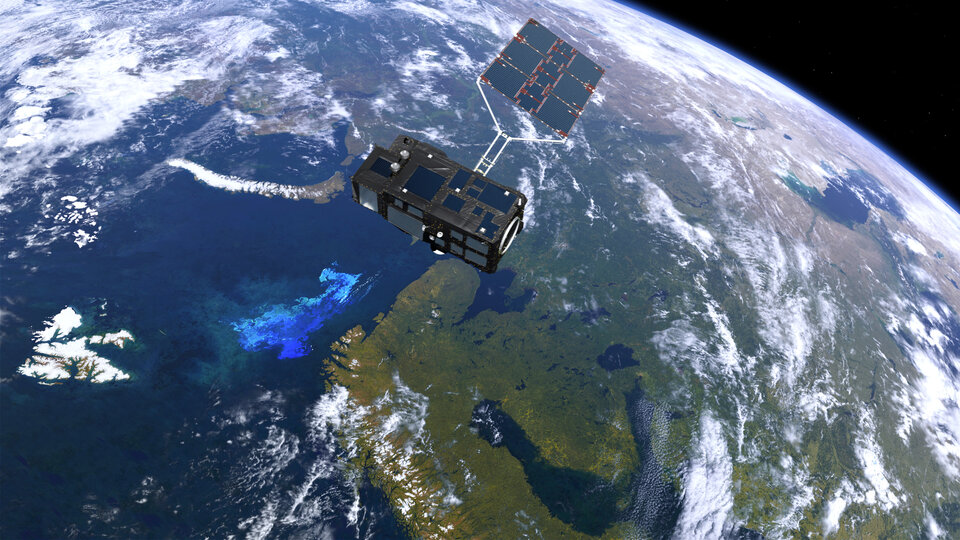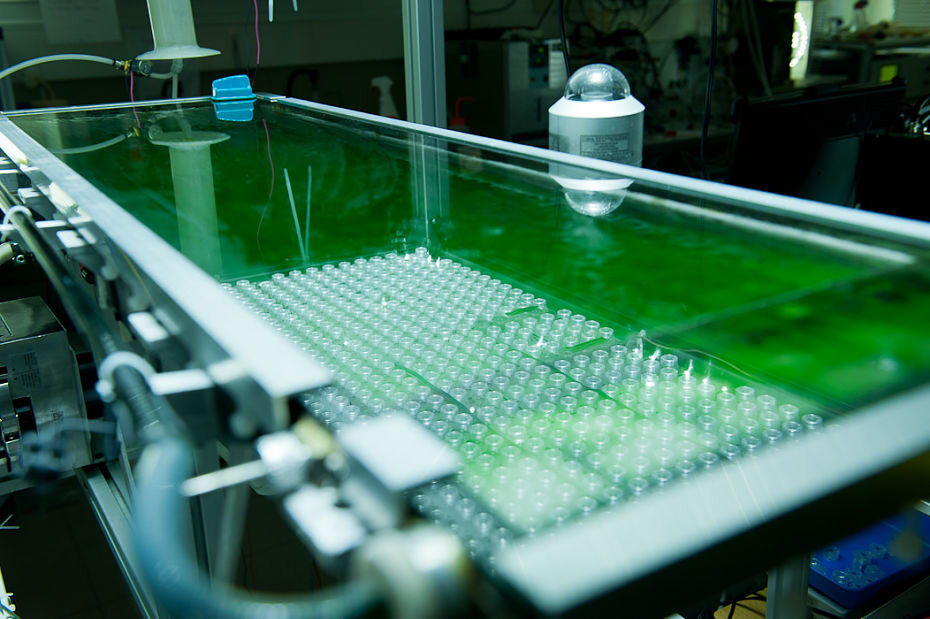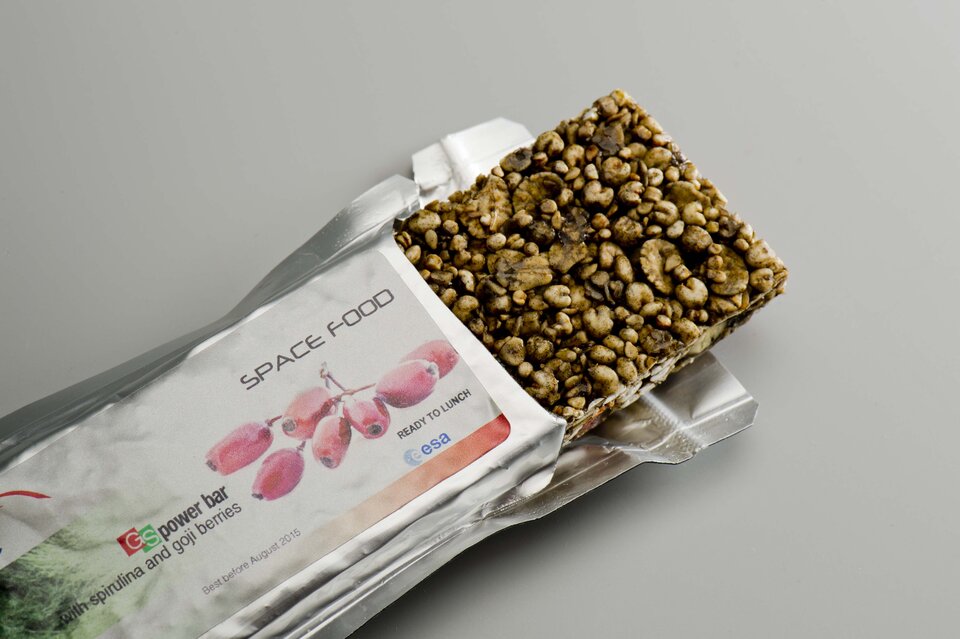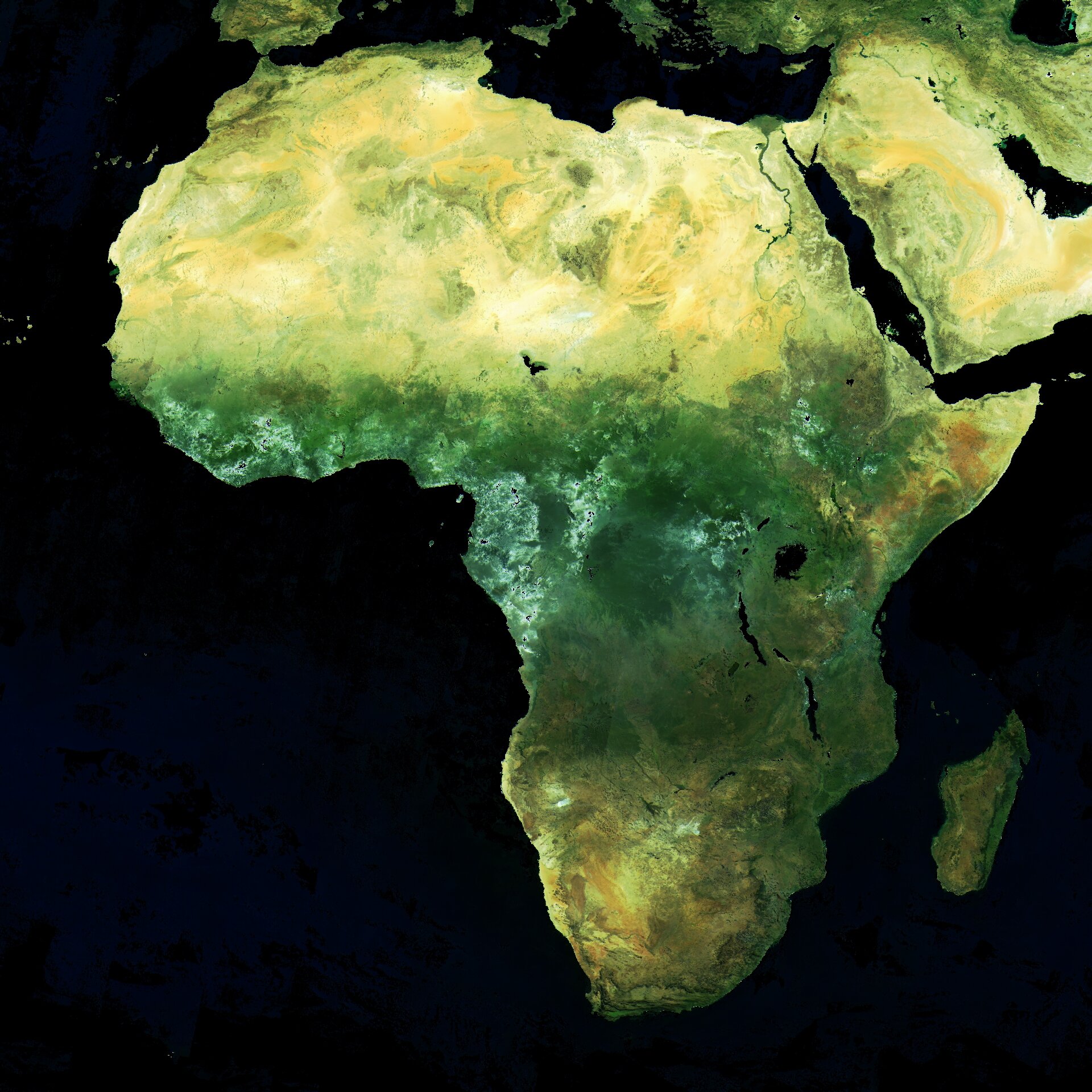Food for thought
On a continent plagued by droughts, floods, desertification and numerous other problems both natural and man-made, and where the population increase is one of the highest in the world, food security is a hot topic that needs to be addressed.
Earth observation satellites allow for detailed, large-scale mapping of agricultural activities. This includes the distribution and condition of crops, the identification of planting and harvesting dates as well as food security early warning activities. In conjunction with agro-meteorological models yields can be forecasted and potential regions of food insecurity pinpointed from space. Associated with positioning information, the use of pesticides can be precisely monitored and reduced, allowing yield increase at reduced cost.
Soil moisture is a key factor that influence the crop yield in a region and can make the difference between crop failure or success. A satellite like SMOS can help identify abnormal weather conditions that may affect the production and yield of crops, and assess the risk of famine by measuring soil moisture in the ‘root-zone’ during the growing season, and detecting the onset and severity of drought. Using satellite data to estimate the amount of water actually needed by crops proves instrumental in optimising the use of water resources for irrigation, thus protecting the farmers from losing their harvests to drought.

The International Fund for Agricultural Development (IFAD) uses satellite data to monitor sustainable expansion of arable land, mainly through implementing irrigation schemes and securing agricultural land. Detailed insight into livestock movement in the region is also obtained with a little help from above, which leads to better project planning in the areas of water supply, forage supply, livestock markets and the cross-border transfer of animals.
Data from Sentinel-2, and the Copernicus Programme as a whole, will benefit services associated with land management and agriculture. The short revisit time (5 days at Equator with two satellites) and geographical coverage are especially useful for monitoring crops where growth and management practices mean that they are constantly changing. Sentinel-2 is designed to provide images that can be used to distinguish between different crop types as well as data on numerous plant indices, such as leaf area index, leaf chlorophyll content and leaf water content – all of which are essential to accurately monitor plant growth.

Keeping a close check on the health of vegetation is essential for agriculture and food security in the arid African regions. Thanks to its range of spectral bands, Proba-V can distinguish between different types of land cover and plant species, including crops. It provides a clear picture of the plants so their health can be easily monitored. This small satellite is therefore especially relevant for improving agricultural practices, tracking desertification and vegetation burn scars.
Data from Sentinel-2, and the Copernicus Programme as a whole, will benefit services associated with land management and agriculture. The short revisit time (5 days at Equator with two satellites) and geographical coverage are especially useful for monitoring crops where growth and management practices mean that they are constantly changing. Sentinel-2 is designed to provide images that can be used to distinguish between different crop types as well as data on numerous plant indices, such as leaf area index, leaf chlorophyll content and leaf water content – all of which are essential to accurately monitor plant growth.

Sentinel-3 is measuring global surface temperatures, which can give an indication of ideal fishing conditions but also recently burnt land. Keeping track of harmful algal blooms and the input of waste water into the ocean helps oceanic food sources to be managed more efficiently. Deforestation, often for agricultural purposes, can lead to a further desertification of a region in which water is already scarce. Sentinel-3’s Ocean and Land Colour Instrument will also provide unique and timely information about vegetation state by measuring key plant variables.
Fish and other sea products are a major source of food in regions that are dependent on ocean life. Satellite instruments can simultaneously gather information across a wide area on important variables such as sea temperature, ocean colour and currents and wind and wave conditions. Combining these variables can highlight areas most likely to prove richest in fish. Wide-area Earth observation also has the potential to detect unregulated and illegal fishing from taking place.
EUMETSAT together with its African user community initiated the Preparation for Use of Meteosat Second Generation (MSG) data in Africa (PUMA). This brings significant benefits to the meteorological services of 41 African nations and 4 Indian Ocean countries. An added benefit lies in the ability to track desertification and monitor surface temperatures. MSG provides scientists with data every 15 minutes, which helps with cloud cover, and the satellites can also follow the changes in reflected light during the day, which are a good indicator of how dry the soil really is.

A project that has been going strong for 25 years and meant to prepare future exploration of the solar system by humans is called the Micro-Ecological Life Support System Alternative or MELiSSA. Based on algae and other organisms and chemicals MELiSSA will develop a compact closed ecosystem to keep astronauts alive on long missions but can also serve current global challenges on Earth, such as waste recycling, water provision, food production in harsh environmental circumstances, etc.

The microalgae used in the MELiSSA system hold promise for many products for human use, from biofuels to oxygen and food (growing very fast and with a very high protein content), as well as to clean contaminated water or extract carbon dioxide from the atmosphere.
A new facility has recently opened that offers researchers and industry an opportunity to experiment with microalgae on larger scales than before as a stepping stone to the industrial production of algae-based products.




